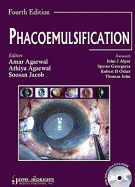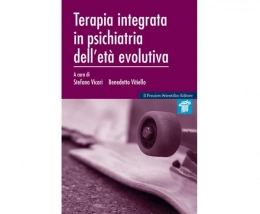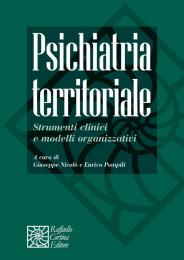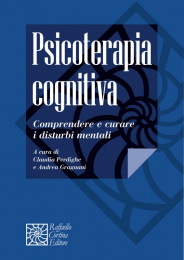Non ci sono recensioni
The fourth edition of Phacoemulsification provides a comprehensive discussion of the subject, from its history, to phaco-hardware, such as machines and pumps, and phaco-software, for example fluidics, software-assisted torsional phaco; to viscosurgical devices, surgical techniques, premium IOLs and management of complications. With contributions from international specialists and almost more than 800 images and illustrations, this book describes in detail new techniques and developments in the treatment of cataracts. A DVD ROM is included covering aphakic bullous keratopathy, traumatic dislocation of IOL, glued IOL reloaded, aniridia with subluxated cataract and glaucoma, and much more.
Contents
Section 1: Introduction
1. Cataract Etiology................................................................................................................. 3
David Meyer, Paul Liebenberg
Introduction 3, Congenital and Infantile Cataract 3, Age-related Cataract 6
2. Biochemistry of the Lens .................................................................................................. 31
Ashok Garg
Introduction 31, Biochemistry of the Lens 31, Crystalline Lens as an Osmometer 31, Lens
Proteins 31, Active Transport Processes 32, Amino Acids 33, Lipids 34, Ascorbic Acid 34,
Glucose Metabolism 34, Applied Physiology 35, Biochemistry of Cortical Cataracts 35,
Nuclear Sclerosis 36
3. History of Phacoemulsification ........................................................................................ 37
Charles D Kelman
Introduction 37, Surgical Problems 39, Instrument Problems 40, Heat Build-up 40, Political
Problems 42
4. Intraocular Lens Power Calculations .............................................................................. 43
Li Wang, Douglas D Koch
Introduction 43, Axial Length Measurement 43, Ultrasound 43, Optical Coherence Biometry
44, Keratometry 44, Anterior Chamber Depth Measurement 45, Intraocular Lens Calculation
Formulas 45, Intraocular Lens Power Calculation following Corneal Refractive
Surgery 46, IOL Power Calculation in Post-LASIK/PRK Eyes 47, Web-based IOL Power
Calculation 49
5. IOL Power Calculation in Complex Cases ....................................................................... 53
Benjamin F Boyd, L Samuel Boyd, Luis W Lu
Introduction 53, Specific Methods to Use in Complex Cases 53, Method for Choosing
Formulas Based upon the Axial Length 53, High Hyperopia 54, Determining IOL Power in
Patients with Previous Refractive Surgery 56, Commonly Used Methods 56, IOL Power
Calculation in Pediatric Cataracts 58, IOL Power Calculation Following Vitrectomy 59
6. IOLMaster for Determining the IOL Power at the Time of Surgery ........................... 62
Hampton Roy, Warren E Hill
Introduction 62, Modes 62, New Intraocular Lens Constants 63, Advantages 63,
Disadvantages 63
7. Corneal Topography in Cataract Surgery ...................................................................... 65
Athiya Agarwal, Amar Agarwal
Introduction 65, Cornea 65, Keratometry 65, Keratoscopy 66, Computerized
Videokeratography 66, Normal Cornea 67, Cataract Surgery 69, Extracapsular Cataract
Extraction 69, Phakonit 70
Section 2: Instrumentation, Medication and Machines
8. The Phaco Machine: How It Acts and Reacts................................................................. 75
William J Fishkind
Introduction 75, Power Generation 75, Energy at the Phaco Tip 75
xxii
PHACOEMULSIFICATION
xxii
9. The Fluidics and Physics of Phaco ................................................................................... 84
Barry S Seibel
Introduction 84, Categorization of Pumps 84, Flow Pump 84, Application of Ultrasound
Power 88, Adjustment of Machine Parameters 88
10. Air Pump and Gas-Forced Infusion ................................................................................ 92
Smita Narasimhan, Amar Agarwal
History 92, Introduction 92, Air Pump 92, Technique 92, Topical or No Anesthesia Cataract
Surgery 93, Internal Gas-Forced Infusion 93, Air Pump-assisted Phaco for Managing Cases
with Incomplete Rhexis 94
11. Torsional Phacoemulsification ......................................................................................... 98
Sunil Thadani, Bonnie An Henderson
Background and Introduction 98, Heat Production 98, Tip Travel 98, Comparisons of
Torsional and Longitudinal Ultrasound Systems 99, Ultrasound Time and Energy Dissipation
100, Corneal Edema and Endothelial Cell Count 100, Visual Acuity 100
12. Viscoelastics and Ophthalmic Viscosurgical Devices (OVDs) in
Ophthalmic Surgery ......................................................................................................... 102
Guillermo L Simón-Castellví, Sarabel Simón-Castellví, José María Simón-Castellví
José María Simón-Tor, Esteban Pertejo-Fernández
Introduction 102, Use of Ophthalmic Viscosurgical Devices in the Operating Theater 102,
Indications of OVDs 103
13. Local Anesthetic Agents .................................................................................................. 117
Ashok Garg
Introduction 117, Local Anesthetics (Injectables) 117, Esters 118, Amides 119, Local
Anesthetics (Topical) 120
14. Anesthesia in Cataract Surgery ..................................................................................... 124
Ashok Garg
Introduction 124, Anesthesia for Cataract Surgery 124, Method of Anesthesia 125,
Complications of General Anesthesia 126, Complications of Retrobulbar Injection 130,
Peribulbar (Periocular) Technique 131, Topical Anesthesia 133, How to Achieve Surface
Anesthesia for Intraocular Surgery 134, Can One Convert Half Way Through Surgery Under
Topical Anesthesia 134, No Anesthesia Cataract Surgery 135
15. Ocular Anesthesia for Small Incision Cataract Surgery .............................................. 136
Samuel Masket
Introduction 136, Methods 138
Section 3: Phaco Steps
16. Preparing for the Transition to Phacoemulsification ................................................... 143
L Samuel Boyd, Benjamin F Boyd, Cristela F Aleman
Introduction 143, Main Elements of Phaco Machines 143, Surgical Techniques in the
Transition 143, Anesthesia 143, The Mechanism of the Phaco Machine 146, Optimal Use
of the Phaco Machine 146, Nucleus Removal and Application of Phaco 149, Fracture and
Emulsification 149, Intraocular Lens Implantation 151, Enlarging the Incision and
Implanting the Lens 151, Removal of Viscoelastic 151
17. Incisions ............................................................................................................................ 153
Luis W Lu, Alejandro Espaillat, Ana Claudia Arenas, Francisco Contreras-Campos
Introduction 153, The Limbal Incision 153, The Scleral Incision 154, The Clear Corneal
Incisions 154, Location 154, The Side Port Incision 156, Relaxing Incisions 156
xxiii
18. Capsulorhexis .................................................................................................................. 158
Tobias Neuhann
History 158, Needle Technique 158, Forceps Technique 159, The Two-step Needle Technique
160, Difficult Cases 161, Small Pupil 161, Pseudoexfoliation Syndrome, Uveitis and
Pigmentosa 161, Complications and Pitfalls 162, Discontinuity of the Capsulorhexis 162,
Captured Viscoelastics 163, Disadvantages of the CCC 163
19. Divide and Conquer Nucleofractis Techniques ............................................................. 166
Howard V Gimbel, Ellen Anderson Penno
Introduction 166, Down-slope Sculpting 166, The Fracture 169, Phaco Sweep 171, Crater
Divide and Conquer (CDC) Technique 171, Trench Divide and Conquer (TDC) Technique
172, Multidirectional Divide and Conquer (MDC) Technique 172, Phaco Chop 173, Polar
Expeditions 174, The Small Pupil 174, Intumescent Lens 175, Capsular Tension Rings 175,
Challenges to Topical Anesthesia in Small-incision Cataract Surgery 175
20. Stop and Chop Phacoemulsification .............................................................................. 178
Amar Agarwal, Soosan Jacob
Introduction 178, Surgical Technique 178, Preliminary Steps 178, Complications 179
21. Phaco Chop Techniques ................................................................................................... 181
Uday Devgan
Phaco Chop 181, Occlusion 181, Horizontal Chopping 181, Vertical Chopping 181, Tilt
And Chop 181
22. No Anesthesia Cataract Surgery with the Karate Chop Technique ........................... 182
Athiya Agarwal, Sunita Agarwal, Amar Agarwal
Introduction 182, Nucleus Removal Techniques 182, Karate Chop 182, Soft Cataracts 182,
Agarwal Chopper 182, Karate Chop Technique 182, Incision 182
23. Supracapsular Phacoemulsification................................................................................ 189
Amar Agarwal, Soosan Jacob
Introduction 189, Surgical Technique 189, Preliminary Steps 189, Complications 190
24. Hydrodissection and Hydrodelineation .......................................................................... 192
I Howard Fine, Richard S Hoffman, Mark Packer
Hydrodissection 192, Hydrodelineation 192, Cortical Clean-up 194, Take Home Pearls 194,
Core Message 194
Section 4: MICS/Phakonit
25. History of Microincision Cataract Surgery (MICS):
From Phakonit to Microphakonit .................................................................................. 199
Amar Agarwal
Introduction 199, MICS IOLs 201
26. Wound Architecture in Microincision Cataract Surgery and
In Vivo Analysis of 700 Micron Cataract Surgery ....................................................... 206
Dhivya Ashok Kumar, Amar Agarwal
Introduction 206
27. Phakonit ............................................................................................................................ 212
Amar Agarwal, Athiya Agarwal, Sunita Agarwal
History 212, Principle 212, Terminology 212, Synonyms 212, Technique of Phakonit for
Cataracts 212, Antichamber Collapser 214, Thinoptx Rollable IOL 216, Lens Insertion
Technique 216, Roller 217, Topography 217, Laser Phakonit 217, Three-Port Phakonit
219, Anterior Chamber (AC) Stability in Phakonit 219
CONTENTS
xxiv
PHACOEMULSIFICATION
xxiv
28. No Anesthesia Sub 1 mm (700 micron) Microincision Cataract Surgery:
Microphakonit ................................................................................................................. 222
Athiya Agarwal, Soosan Jacob, Amar Agarwal
History 222, Microphakonit (0.7 mm) Needle Tip 222, Microphakonit (0.7 mm) Irrigating
Chopper 222, Air Pump and Gas Forced Infusion 223, Bimanual 0.7 mm Irrigation
Aspiration System 224, Duet Handles 224, Differences between 0.9 mm and 0.7 mm Sets in
Cataract Surgery 224, Technique 225
29. 1.8 mm C-MICS with the Stellaris Vision Enhancement System ................................ 227
Terence M Devine
Why Coaxial Microincision Cataract Surgery (C-MICS)? 227, Fluidics Control 227,
Chamber Stability 228, Optimizing Cutting Efficiency 229, Controlling Ultrasound Power
231, Thermal Effects and Corneal Wound Burn 231, 1.8 mm C-MICS Fluidics and Machine
Settings 232, 1.8 mm C-MICS Technique 234
30. Microcoaxial Phacoemulsification ................................................................................. 236
Vaishali Vasavada, Viraj A Vasavada, Abhay R Vasavada, Shetal M Raj
Introduction 236, Bimanual Microcoaxial Phacoemulsification (MICS) 236, Conventional
Coaxial Phacoemulsification 236, Microincisional Coaxial Phacoemulsification 236, The
Microcoaxial Incision 236, Surgical Technique and Instrumentation 237, Intraocular Lens
(IOL) Implantation 237
Section 5: Premium IOLs
31. Effect of the Shape Factor on the Quality of Images in Eyes Corrected with IOLs . 245
I Pascual, A Beléndez, L Carretero, A Fimia, R Fuentes, C González, F Mateos, E Villegas
Introduction 245, Geometry of Intraocular Lenses 245, Classification of Intraocular Lenses
245, Function 246, Materials 246, Power Calculation Formulas 246, Aberrations of
Intraocular Lenses 247, Seidel’s Theory: Spherical Aberration 248
32. Materials for Intraocular Lenses .................................................................................... 257
JM Legeais
Polymethylmethacrylate and Intraocular Lenses 257, PMMA IOL and Surface Properties
258, Silicone for IOL 260, Soft Acrylic IOL 264, Hydrogel Intraocular Lenses 264, Soft
Acrylic IOLs 266
33. Premium IOLs ................................................................................................................. 274
Amar Agarwal
Introduction 274, Alternate Treatments 274, Surgical Procedure 274, Tips 274, Lenses 274,
Nonophthalmols 276
34. Correction of Astigmatism with Toric IOL Implants—Practical Aspects .................. 278
Christopher Khng
Introduction and Overview 278, Current Toric IOL Models 278, Problems with Toric IOLs
278, Indications for Astigmatism Correction with Toric IOL 278, Toric IOL or Limbal
Relaxing Incisions (LRI) 278, Calculation of Toric IOL Power and Placement Axis 279,
Surgical Technique for Implantation 279, Combining Toric IOLs 282
35. The Multifocal Intraocular Lens.................................................................................... 284
I Howard Fine, Richard S Hoffman, Mark Packer
Lens Design 284, Clinical Results 284, Patient Selection 284, Preoperative Measurements
285, Surgical Technique 286, Complications Management 286, Postoperative Course 286
36. Angle Kappa: The Angle to the Mystery of Multifocal IOLs ....................................... 288
Gaurav Prakash, Soosan Jacob, Amar Agarwal
Introduction 288, What Role Does Angle Kappa Play for the Cataract Surgeon? 288,
Multifocal Glued IOL 289, Angle Kappa and Multifocal IOL 289
xxv
37. Refractive Cataract Surgery .......................................................................................... 293
Pandelis A Papadopoulos
Biometry 293, Ultrasound Biometry 293, Optical Biometry 294, IOLs for the Correction of
Presbyopia 294, Monovision with Monofocal IOLs 294
38. Minimally Invasive Cataract Surgery and MICS IOLs:
Our Experience, Our Technique, Our Outcomes ......................................................... 304
Jorge L Alio, P Klonowski
The Modern Evolution of Cataract Surgery 304
39. Functional Vision, Wavefront Sensing and Cataract Surgery .................................... 317
Mark Packer, I Howard Fine, Richard S Hoffman
Introduction 317, Spherical Aberration 317, Tecnis IOL 319
40. The Light Adjustable Lens ............................................................................................. 321
Richard S Hoffman, I Howard Fine, Mark Packer
The Ideal Pseudophakic Lens 321, Light Adjustable Lens 321, Modulating Refractive Power
321, Animal Studies 322, Resolution 323, Refractive Lens Exchange 323, Higher Order
Aberrations 325, Final Comments 326
Section 6: Difficult Cases
41. Posterior Polar Cataract ................................................................................................. 331
Abhay R Vasavada, Shetal M Raj
Introduction 331, Diagnosis 332
42. Phaco in Subluxated Cataracts ...................................................................................... 337
Athiya Agarwal
Indications 338
43. Mature Cataracts ............................................................................................................ 345
Amar Agarwal
Introduction 345, Rhexis in Mature Cataracts 345, Trypan Blue 345
44. Combined Cataract and Glaucoma Surgery ................................................................ 347
Amar Agarwal, Soosan Jacob
Introduction 347, Surgical Options 347, Antimetabolites 350, Types of IOL 350,
Complications 350
45. Correcting Astigmatism Through the Use of Limbal Relaxing Incisions ................... 353
Louis D “Skip” Nichamin
Introduction 353, Limbal Relaxing Incisions 353, The Plan 353, Nomograms 353, Surgical
Technique 354, Complications 355
46. Pediatric Cataract Surgery ............................................................................................ 358
Rupal H Trivedi, M Edward Wilson
Introduction 358, Preoperative Considerations 358
47. Small Pupil Phacoemulsification .................................................................................... 378
Amar Agarwal, Soosan Jacob
Introduction 378, Preoperative Evaluation 378, Pharmacological Mydriasis 379,
Intraoperative Procedures Not Involving Sphincter 379, Intraoperative Procedures Involving
Sphincter 379, Use of Malyugin Ring for Small Pupil Phacoemulsification 381, Modified
Malyugin Ring Iris Expansion Technique 382, Surgical Complications 382,
Phacoemulsification Pearls 382
CONTENTS
xxvi
PHACOEMULSIFICATION
xxvi
48. Intraoperative Floppy Iris Syndrome............................................................................ 384
David F Chang
Clinical Features 384, Clinical and Surgical Management of IFIS 385
49. Phacoemulsification and Keratoplasty .......................................................................... 389
Javier Mendicute, Yolanda Gallego, Aritz Bidaguren, Marta Ubeda, Cristina Irigoyen
Introduction 389, Indications 390, When to Operate? 391, Combined or Two-stage
Procedure? 391, Nine Optical Aids for Improving Visualization 392, Phacoemulsification
and Penetrating Keratoplasty 393, Phacoemulsification and Lamellar Techniques 395,
Complete Thickness Corneal Opacity 395
50. Conversion from Phaco to ECCE (Manual Non-phaco Techniques).......................... 398
Soosan Jacob, Dhivya Ashok Kumar, Amar Agarwal
Introduction 398, Brunescent and Black Cataracts 398, Morgagnian Cataracts 398, Severe
Pseudoexfoliation 398, Zonular Dialysis or Weakness 398, Eyes with Shallow Anterior
Chambers 398, Small Pupil with Hard Cataract 398, Phacolytic Glaucoma 399, Bad
Endothelial Count 399, Conversion from Phaco 399
51. Cataract Surgery and Implantation of Intraocular Lenses in
Severe Hyperopia ............................................................................................................ 400
Roberto Bellucci
Introduction 400, Surgical Anatomy of Severely Hyperopic Eyes 400, Phacoemulsification
in Severe Hyperopic Eyes 401
52. Cataract Surgery in the Patient with Uveitis ................................................................ 407
Enrique Chipont, Jorge L Alio
Introduction 407, Clinical Examination 407, Surgical Indications 407, Preoperative
Management 408, Surgery: Phacoemulsification 408, Intraocular Lenses 409, Combined
Surgeries 409, Postoperative Treatment 410, Follow-up 411
Section 7: Complications
53. Posterior Capsular Rupture ........................................................................................... 415
Dhivya Ashok Kumar, Amar Agarwal
Introduction 415, Common Risk Factors for Posterior Capsular Rupture (PCR) 415, Steps
for Management of PCR 416, Reduce the Parameters 416
54. Posterior Capsule Rupture and Vitreous Loss.............................................................. 421
Brian Little
Introduction 421, Preventing Vitreous Loss 421
55. Intraocular Lens (IOL) as a Scaffold to Prevent Nucleus Drop.................................. 426
Dhivya Ashok Kumar, Amar Agarwal
Introduction 426, Surgical Technique 426
56. Management of Dropped Nucleus and IOLs ................................................................ 430
Kaladevi Satish, Dhivya Ashok Kumar, Amar Agarwal
Introduction 430, Dropped Nucleus 430, Indications for Surgery 430, Surgical
Techniques 430, Dropped Intraocular Lens 432, Complications and Prevention 436
57. Posterior Dislocation of Lens Material During Cataract Surgery .............................. 438
Steve Charles
Surgical Psychodynamics 438, Early Recognition and Management of Defects in the Lens
Capsule 438, Vitreous Loss 438, Dislocated Lens Material 439, Intraocular Lens
Implantation 441
xxvii
58. The Malpositioned Intraocular Implant ....................................................................... 442
Clement K Chan, Amar Agarwal
Introduction 442, Management of a Malpositioned IOL 442, Chandelier Illumination 442,
Perfluorocarbon Liquids 443, Anterior Chamber Intraocular Lens (ACIOL) 443, Opened
Eye or External Approach 444, Closed Eye or Internal Approach—Pars Plana Techniques
444, Temporary Haptic Externalization 444, One-piece Silicone Plate IOL 446, Managing
Eyes with Two Intraocular Implants 447
59. Evaluation of IOL Tilt with Anterior Segment Optical Coherence
Tomography ..................................................................................................................... 450
Dhivya Ashok Kumar, Amar Agarwal
Introduction 450, Cases 450
60. Expulsive Hemorrhage ................................................................................................... 453
Soosan Jacob, Amar Agarwal
Introduction 453, Expulsive Hemorrhage 453, Prevention 454, Management 454
61. Postoperative Inflammation after Cataract Extraction by
Phacoemulsification ........................................................................................................ 456
AT Gasch, Chi-Chao Chan
Introduction 456, Infectious Postoperative Inflammation/Endophthalmitis 456, Noninfectious
(Sterile) Postoperative Inflammation/Endophthalmitis 458, Inflammation Due to Surgical
Trauma 459, Inflammation Due to Surgical Complications 459, Exacerbation of Pre-existing
Uveitis 459, Lens-Induced Uveitis 459, Residual Lens Epithelial Cells 460, Inflammation
Related to Intraocular Lenses 460, Miotic Agents 461, Intraocular Solutions 461, Residual
Contaminants on Sterilized Instruments 461, Particulate Contaminants 461, Toxic Anterior
Segment Syndrome (TASS) 462
62. Toxic Anterior Segment Syndrome ................................................................................ 465
Nick Mamalis, Stanley Fuller
Introduction 465, Clinical Presentation of TASS 465, Differential Diagnosis 465, Etiology
of TASS 466, Treatment 468, Prognosis 468, Outbreak Analysis 469
63. Pseudophakic Cystoid Macular Edema ........................................................................ 471
Carlos F Fernandez, J Fernando Arevalo
Introduction 471, Histology 471, Pathogenesis 472, Natural History 474, Differential
Diagnosis 474, Clinical Presentation 475, High-risk Characteristics for Cystoid Macular
Edema 476, Prevention 476, Treatment Options 477
64. Postoperative Endophthalmitis ...................................................................................... 482
Clement K Chan
Incidence and Presentation 482, Causative Organisms 482, Clinical Evaluation and
Diagnostic Studies 485, Treatment of Endophthalmitis 488
65. Delayed Postoperative IOL Opacification..................................................................... 498
Suresh K Pandey, Liliana Werner, Andrea M Izak, David J Apple
Introduction 498, Opacification of Foldable Hydrophilic Acrylic Lenses 501, Prevention
and Treatment 507
66. Explanting a Posterior Chamber Intraocular Lens ..................................................... 510
Thomas A Oetting
Introduction 510, Indications for IOL Explantation 510
67. Posterior Capsular Opacification .................................................................................. 516
Suresh K Pandey, Liliana Werner, David J Apple, Andrea M Izak
Introduction 516, Background 516, Clinical Manifestations and Treatment 519
CONTENTS
xxviii
PHACOEMULSIFICATION
xxviii
Section 8: IOL Implantation in Eyes
Without a Capsule
68. Sutured Scleral Fixated IOL .......................................................................................... 535
Amar Agarwal, Soosan Jacob
Introduction 535, Surgical Technique 535, Complications 536
69. Iris Suture Fixation of Intraocular Lenses .................................................................... 538
Roger F Steinert
Principles 538
70. Sutureless Posterior Chamber IOL Fixation with Intrascleral Haptic Fixation ....... 541
Gabor B Scharioth
Introduction 541, Surgical Technique 541
71. Glued PC IOL Implantation with Intralamellar Scleral Tuck in
Eyes with Deficient Capsule ........................................................................................... 545
Dhivya Ashok Kumar, Amar Agarwal
Introduction 545, Surgical Technique 545
Section 9: Miscellaneous
72. Femtosecond Laser-Assisted Refractive Cataract Surgery ......................................... 559
Glauco Reggiani Mello, Jonathan H Talamo, Ronald R Krueger
Limitations of Manual Cataract Surgery 559, Femtosecond Laser Technology 559, Systems
Available 560, Procedure 561, Astigmatic Correction 563, Complications, Risks and
Limitations 564, Economics 565
73. Use of High-Definition 3D Visual Systems in Cataract Surgery ................................. 566
Robert J Weinstock
The Truevision® 3D HD System 566, The Truevision® Cataract and Refractive Toolset
Software 567
74. A New Sulcus Implanted Mirror Telescopic IOL for Age-related Macular Diseases
and Other Macular Disorders: The LMI-SI (ORILENS©)......................................... 569
Soosan Jacob, Issac Lipshitz, Amar Agarwal
Introduction 569, LMI-SI (ORILENS©) 569, Preoperative Evaluation 569, Surgery for
Implanting the LMI-SI (ORILENS©) 569, Results 571, Advantages of the LMI-SI 571,
Financial Disclosures 571
Index .......................................................................................................................................... 573




